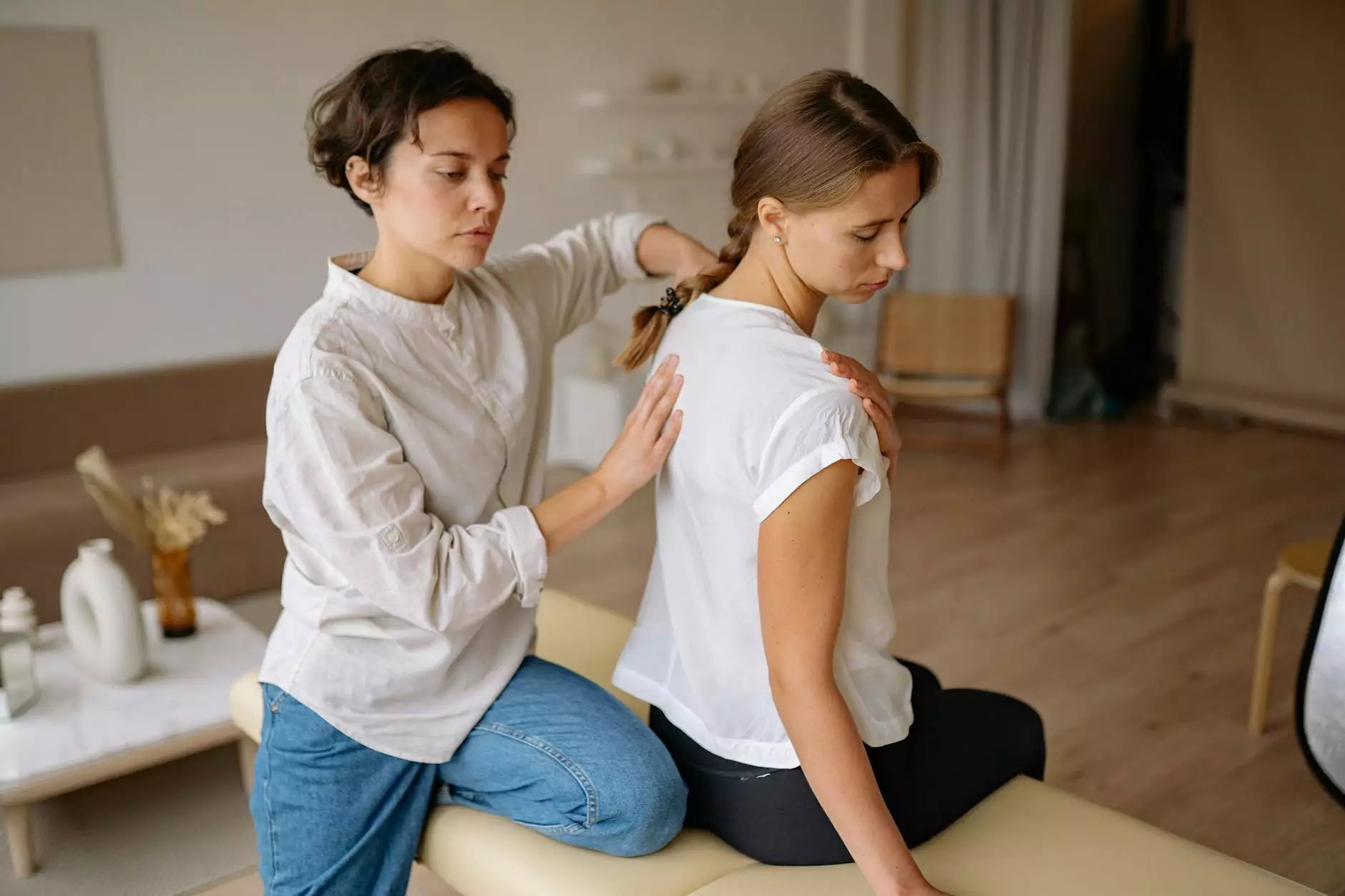Understanding 90 Degree Shoulder Abduction: A Comprehensive Guide

Introduction to Shoulder Mechanics
The shoulder joint is one of the most dynamic and versatile joints in the human body, allowing for a wide range of movements. Among these movements, 90 degree shoulder abduction is a critical action that plays a significant role in both daily activities and athletic performance. This article delves into the importance of this movement, how it is executed, and its relevance in health and medical education.
What is 90 Degree Shoulder Abduction?
90 degree shoulder abduction refers to the movement of raising the arm laterally away from the body, reaching a horizontal position at a 90-degree angle from the torso. This motion is primarily facilitated by several muscles, including:
- Deltoid Muscle: This is the main muscle responsible for shoulder abduction. The middle fibers of the deltoid are particularly engaged during 90 degree abduction.
- Supraspinatus: A part of the rotator cuff, this muscle initiates the abduction movement.
- Trapezius and Serratus Anterior: These muscles assist in stabilizing the scapula, providing a solid base for shoulder movements.
The Importance of 90 Degree Shoulder Abduction
Understanding the mechanics and execution of 90 degree shoulder abduction is essential for several reasons:
Rehabilitation and Injury Prevention
Many shoulder injuries result from improper movement patterns or lack of strength in specific muscle groups. Incorporating 90 degree shoulder abduction into rehabilitation protocols can aid in:
- Restoring Range of Motion: After injuries like rotator cuff tears or shoulder impingement, facilitating proper abduction can help restore normal shoulder function.
- Strengthening Key Muscles: Targeted exercises can help in strengthening the muscles involved in abduction, thus preventing future injuries.
Enhancing Athletic Performance
For athletes, the ability to perform a smooth and effective 90 degree shoulder abduction can significantly impact performance, especially in sports that require overhead movements. Proper technique and strength training help athletes execute skills with precision and power.
How to Perform 90 Degree Shoulder Abduction Correctly
Executing 90 degree shoulder abduction properly is crucial to avoid injuries and ensure effective training. Follow these steps:
Starting Position
Begin standing or sitting with your arms at your sides, maintaining a neutral spine. Your feet should be shoulder-width apart for balance.
Movement Execution
- Raise the Arm: Slowly lift the arm laterally to your side, ensuring the elbow remains straight.
- Achieve 90 Degrees: Continue lifting until the arm is parallel to the floor, forming a 90-degree angle with the torso.
- Hold the Position: Pause briefly at the top of the movement to engage the muscles effectively.
- Lower the Arm: Gradually bring your arm back down to the starting position, maintaining control throughout the movement.
Common Mistakes to Avoid
When practicing 90 degree shoulder abduction, it’s vital to avoid these common mistakes:
- Raising the Shoulders: Keep shoulders down and relaxed to avoid placing unnecessary stress on the shoulder joint.
- Using Momentum: Focus on controlled movement rather than swinging the arm to prevent injury and ensure muscle engagement.
- Failing to Stabilize the Scapula: Properly engage the serratus anterior and trapezius muscles to stabilize the shoulder blade during the abduction.
Incorporating 90 Degree Shoulder Abduction into Workouts
If you are a fitness enthusiast or a professional instructor, integrating 90 degree shoulder abduction into your routines can be beneficial. Here are some effective exercises and tips:
Exercises Focused on Shoulder Abduction
- Dumbbell Lateral Raises: A simple yet effective exercise to strengthen the deltoid and supraspinatus during abduction.
- Resistance Band Abduction: Use resistance bands to perform abduction exercises, which provide variable resistance and enhance muscle engagement.
- Cable Machine Lateral Raises: A cable machine allows for constant tension throughout the range of motion, further engaging the core and stabilizers.
Warm-Up and Cool-Down
Before engaging in exercises focusing on 90 degree shoulder abduction, always perform an adequate warm-up. This might include:
- Dynamic Shoulder Stretches: Arm circles and wall slides can prepare the muscles and joints.
- Light Resistance Band Work: Performing low-resistance abduction movements can activate the shoulder muscles.
After your workout, don’t forget to cool down with static stretches to enhance flexibility and recovery.
The Role of Education in Shoulder Health
Education in the health and medical fields plays a pivotal role in understanding the importance of proper shoulder mechanics, including 90 degree shoulder abduction. Professionals such as chiropractors, physical therapists, and fitness trainers must be well-versed in:
- Anatomy of the Shoulder: Knowledge of muscles, ligaments, and the shoulder joint's mechanics is crucial for effective treatment and training.
- Rehabilitation Protocols: Tailoring rehabilitation programs that incorporate shoulder abduction exercises can lead to better patient outcomes.
- Preventative Strategies: Educating patients and clients on proper movements can help in preventing injuries related to the shoulder.
Conclusion
In today’s active lifestyle, understanding the mechanics of 90 degree shoulder abduction is paramount for both performance and injury prevention. Whether you are a healthcare professional, an educator, or an individual engaged in fitness, mastering this essential movement can have profound benefits. By incorporating effective exercises, proper techniques, and educational practices, we can ensure healthier shoulders, improved performance, and a better quality of life.
Additional Resources
For further reading and resources on shoulder mechanics, physical therapy, and injury prevention, consider visiting reputable sites like the following:
- IAOM-US - [Health & Medical, Education, Chiropractors]
- American Physical Therapy Association
- National Institutes of Health









